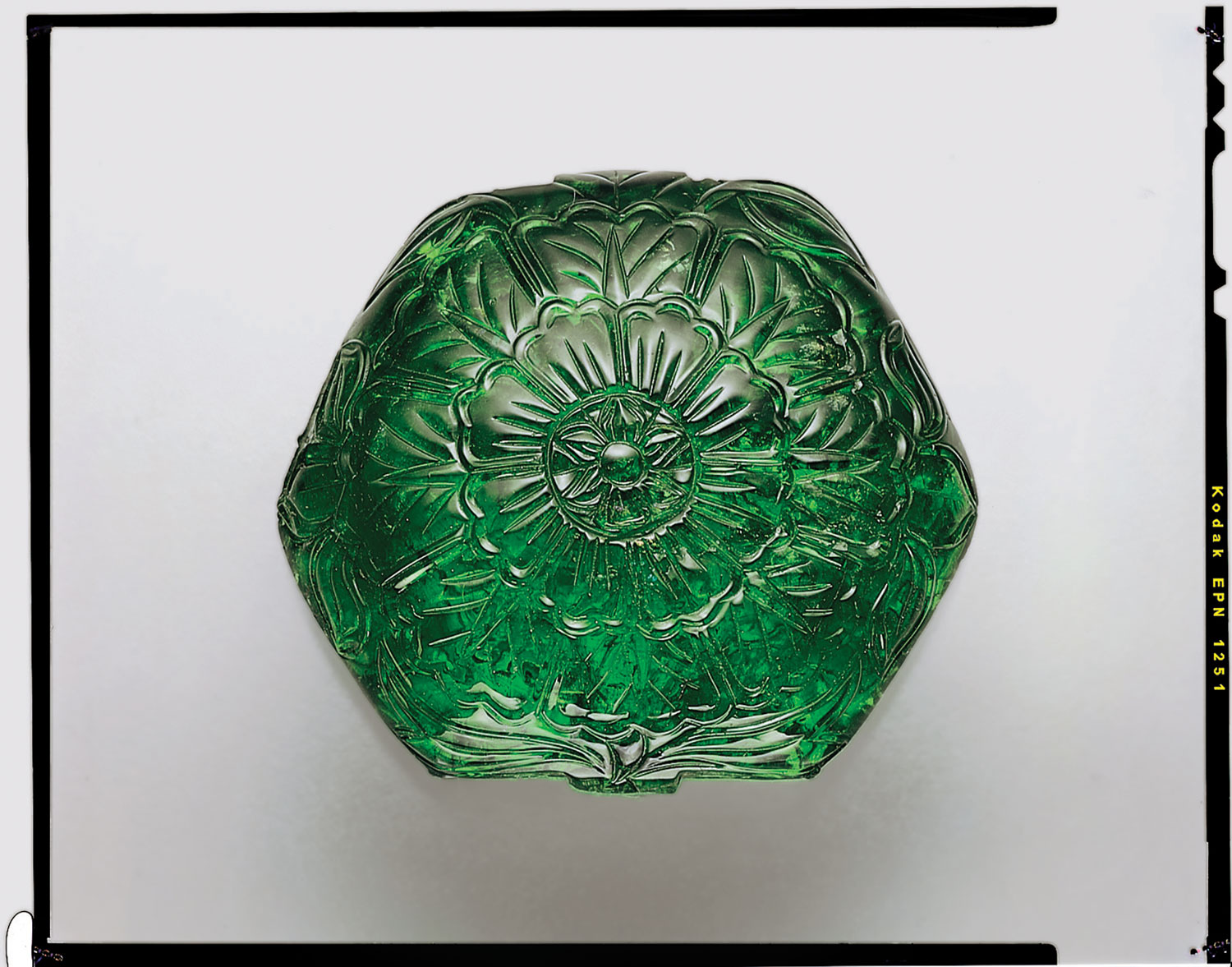No other precious stone so closely resembles plant life than emeralds, the chlorophyll promise of eternal renewal. A few centuries ago, In Islamic kingdoms, green was the colour of the Prophet and of Paradise, and intimate connections to both could be advertised in the form of turban ornaments, rosaries, rings and amulets. In early modern times, a fine emerald could be a kind of portable hierophany, as much for Hindus and Christians as for Muslims. Spanish jewellers in the 16th century lovingly described emerald inclusions or peculiar internal flaws as jardín, or ‘garden’, while also referring to the best stones as having ‘the aspect of heaven’ (laya del cielo). A fine emerald, one might say, was a fossilised remnant of Eden, a foretaste of the Promised Land. Emerald was also medicine and prophylaxis, protection against poisonous food, snakebite, an enemy’s arrows and the evil eye. In early modern times the only new source of emeralds was New Granada, today’s Colombia. They caused a global stir once they hit the market after 1540, and despite new finds, Colombia still produces the most prized emeralds in the world. Colombia’s emerald belt trends northwest to southeast about 100 km north of Bogotá. In colonial times, armies of workers mined emeralds by chipping benches into hillsides and flushing away detritus with water collected above. Mining emeralds sped deforestation in Colombia’s Emerald Eden.
EMERALD EDEN
Kris Lane
Further reading
- Bycroft, M., and S. Dupré (eds.) (2019) Gems in the Early Modern World: Materials, Knowledge & Global Trade, 1450–1800 (London: Palgrave).
- Domínguez, R. (1965) Historia de las esmeraldas de Colombia (Bogotá: Gráficos Ducal).
- Forsythe, H. (2003) The Cheapside Hoard (London: Museum of London).
- Giuliani, G., M. Chaussidon, H.-J. Schubnel, D.H. Piat, C. Rollion-Bard, C. France-Lanord, D. Giard, D. de Narvaez, and B. Rondeau (2000) ‘Oxygen isotopes and emerald trade routes since antiquity’, Science, vol. 287, 631–3.
- Jaffer, A. (2017) Treasures of the Mughals and the Maharajas: The al-Thani Collection (Milan: Skira).
- Keene, M. (2001) Treasury of the World: Jewelled Arts of India in the Age of the Mughals (London: Thames & Hudson).
- Lane, K. (2010) Colour of Paradise: The Emerald in the Age of Gunpowder Empires (New Haven/ London: Yale University Press).
- Meen, V.B., and A. D. Tushingham (1968) Crown Jewels of Iran (Toronto: University of Toronto Press).
- Otero Muñoz, G., and A.M. Barriga Villalba (1948) Esmeraldas de Colombia (Bogotá: Banco de la República).
- Peretti, A., and T. Falise (2017) Magnificent Green: On the Trail of the Legendary Colombian Emerald (Hong Kong: Gem Research Swisslab).
- Schmetzer, K., G. Martayan, J. Guillermo Ortiz, and A.R. Blake (2018) ‘Rediscovery and history of the Chivor emerald mines: between legends and reality (1880–1970)’, InColor Special: Emerald, vol. 40, 58–63.
- Sinkankis, J. (1981) Emerald and Other Beryls (Radnor, PA: Chilton Book Co.).





